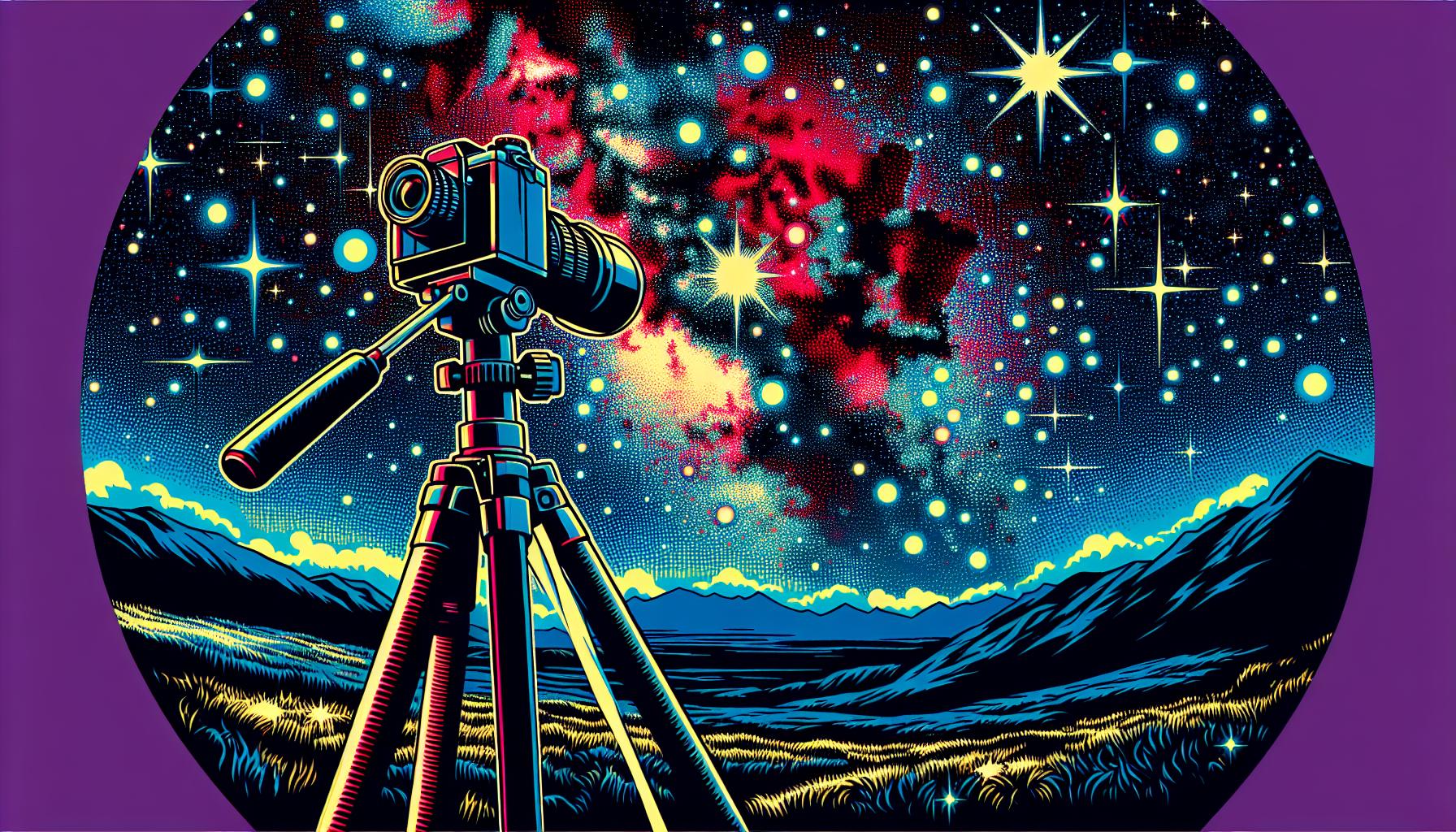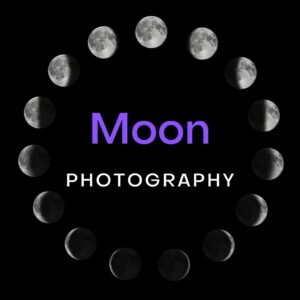This site contains affiliate links to products. I may receive a commission for purchases made through these links.
Astrophotography is a niche that’s fascinated me for years. It’s the art of capturing the beauty of the night sky, a snapshot of the cosmos. But what if I told you that you don’t need to be an expert or have fancy equipment to get started?
You might be thinking it’s impossible to capture clear, detailed images of celestial bodies without guiding. I’m here to bust that myth. With the right approach, you can take stunning astrophotography shots without any guiding at all.
In this article, I’ll share some of my best tips and tricks to help you master astrophotography without guiding. So, whether you’re a seasoned photographer looking to try something new, or a beginner eager to dive into this exciting field, stay tuned.
The Basics of Astrophotography
Astrophotography knows no bounds, and it often amazes me the images I’ve been able to capture, even from my own backyard. But before we venture out into guiding-free astrophotography, it’s important to understand the basics.
What is astrophotography, exactly? In its simplest form, it’s the art of capturing images of the night sky and celestial objects. We’re talking about mesmerizing nebulae, magnificent galaxies, and captivating star clusters. You’re essentially capturing the cosmos in a single frame.
Getting into astrophotography is a journey of its own with endless possibilities. Equipment and tools play a significant role. But don’t be intimidated, you don’t necessarily need a garage full of telescopes and complex machinery. A basic DSLR camera or a mirrorless camera, a sturdy tripod, and a fast aperture lens are often enough to get you started.
There’s a lot of science behind it as well. It’s crucial to understand how your camera controls work, grasp the concept of light exposure, and know how to play around with ISO settings, shutter speed, and aperture. The key lies in striking the right balance between these components and making them work in your favor.
The next critical aspect is composition and framing. Here’s where your creative instincts kick in. Strive for a frame that tells a story beyond the light gathered from a thousand worlds – a solitary tree under the Milky Way, or a quiet town under the twinkling stars.
To make your journey easier into astrophotography, don’t stress about the specifics too much. The beautiful thing about this field is that it’s essentially about learning as you go. Enjoy the experience of capturing the night sky; the stars aren’t going anywhere, so take your time.
Once you’re comfortable with the basics, we’ll start exploring how to step up your game with zero-guiding techniques, making the cosmos truly your canvas.
Equipment Needed for Astrophotography without Guiding
Continuing on our journey of star-studded photography, let’s delve into the key equipment you’ll need for astrophotography without guiding. Bear in mind, it’s not about hoarding the most advanced tools, rather, it’s making the most out of what you’ve got in hand. So, you might already have some of these in your kit.
1. DSLR or Mirrorless Camera: The heart of astrophotography is a good camera. Digital Single Lens Reflex (DSLR) cameras are popular among beginners due to their affordability and ease of use. Meanwhile, evolved photographers often prefer mirrorless cameras for their superior image quality and lighter weight.
2. Wide Angle Lens: These lenses are perfect for capturing the broad starry sky. They can capture more area, making them ideal for landscape-based night sky photos.
3. Sturdy Tripod: Without a doubt, a solid and dependable tripod is one of the most pivotal tools in your astrophotography gear. It ensures your camera stays steady during long exposures.
4. Remote Shutter Release: A remote shutter release allows you to take pictures without physically touching your camera, thereby minimizing the chance of unintentional shaking or movement.
5. Intervalometer: This piece of tech controls your camera’s shutter speed, enabling you to shoot long exposure images of the night sky effortless.
Aside from the essentials, additional tools like a star tracker and light pollution filter can be added to your arsenal. However, remember our focus is on using what we’ve got and perfecting skills. Above all, don’t forget the most indispensable tool of all – your creativity. You’ve got the tools, now let’s discover how to optimize it for zero-guiding astrophotography.
Finding the Right Location and Conditions
Selecting the optimal location for astrophotography without guiding is equally as crucial as having quality equipment. Light pollution often poses the biggest obstacle to capturing awe-inspiring images of the cosmos. That’s why the aim should be to find a location with a clear and dark sky, far away from the glaring lights of cityscapes. My top tip? Take a look at a light pollution map. It’ll give you an idea of how to locate a place with minimum light interference.
Let’s talk about the conditions. Astrophotography is heavily dependent on the right weather conditions. A clear, cloudless sky is an absolute must. It’s the best way to ensure you’re capturing the stars unobstructed. Trust me, there’s nothing more frustrating than setting up your equipment just for rogue clouds to roll in and obscure your view of the stars. Consider using a weather app that provides accurate sky condition forecasts. Go for those with specific details for astronomers – they’ll offer the most reliable information.
Don’t forget about the moon—yes, our closest celestial neighbor can be a bit of a party pooper when it comes to astrophotography. Its bright light can wash out fainter stars and galaxies. There are two ways to work around this. One, plan your astrophotography sessions around the new moon, when it’s not visible. Or two, use the moon to your advantage. This might seem counterintuitive, but a moonlit landscape can add a beautiful dimension to wide-field astrophotos. A quick moon-phase calendar check before heading out won’t hurt.
Astrophotography hinges on consistent practice, perseverance, and patience. Over time, you’ll intuitively understand how different factors intersect to present the perfect environment for capturing the beauty of the night sky. In the next section, I’ll delve into the actual setup and shooting process, guiding you step-by-step on your journey to stellar astrophotography.
Camera Settings for Astrophotography without Guiding
Getting the most out of every frame follows a logical pathway: understanding your camera settings. Knowing your camera inside out allows you to take advantage of everything it can offer. Once you’ve found that perfect location, these settings enable you to maximize the potential of your astrophotography endeavors.
First up on the list is the ISO setting. It plays a critical role in achieving beautiful night sky images. High ISO settings are typically used in astrophotography. Ranging from 800 to 6400, the absence of daylight requires a more responsive sensor. But remember, the higher the ISO, the more grain or “noise” in your photo.
Coupling your ISO, we have the shutter speed. The ideal shutter speed is usually 20 seconds when shooting without a guide. It captures enough light but does not allow stars to develop into star trails due to Earth’s rotation.
Thirdly, let’s address the aperture. A wide aperture (low f-number) is preferable as it allows more light to hit your sensor. Somewhere around f/2.8 should do the trick. But please remember that different lenses will present different availabilities.
Next, we work with camera focus. The stars are far off, that’s a given! Thus, setting your focal point to infinity (∞) is a smart move.
Finally, you shouldn’t underestimate the RAW image format. By shooting in RAW, you gain much more flexibility when editing your shots. It ensures the highest quality image becomes your starting point for any post-processing.
This breakdown covers the primary aspects of camera settings for astrophotography without a guide. However, other factors like white balance, drive mode, even lens selection can also have a significant impact.
Tips and Tricks for Capturing Stellar Images
Delving deeper into astrophotography, it’s crucial to master some specific strategies that will significantly enhance your cosmic captures. Let’s get straight to some of my go-to practices for capturing the night sky in all its glory.
More Light, More Detail. Yes, it’s that simple. More light allows you to catch more detail. So, when it’s reasonable, don’t be afraid to allow for longer exposure times. But be wary of star trailing, which occurs after a certain period. Depending on your lens and camera combination, this may happen after 20-30 seconds.
Ditch the Saturation. High color saturation might sound tempting, but it often leads to unnatural-looking images. It’s best to capture the natural beauty of the cosmos, so avoiding overly saturated colors is the way to go.
Avoid Over-Editing. While post-processing, it’s easy to go overboard with contrast and sharpness. Overdoing these aspects can lead to noisy images or emphasize the camera’s sensor limitations. So, keep it balanced.
Experiment with Lens. Different lenses deliver different results for astrophotography. While some prefer wide-angle lenses for capturing broader landscapes with the stars, others might prefer telephoto lenses to capture specific celestial bodies. So, don’t hesitate to experiment till you find what suits your style best.
Practice Manual Focusing. Auto focus can sometimes fail you in low light situations, so mastering manual focus for astrophotography is a golden rule. Learn to adjust the lens to ‘infinity’ for sharp star images.
Scout Your Location. Always remember: Darker skies yield better results. So, scout for a location far from city lights.
Keep in mind that small changes to your settings can have profound effects on the final image. So don’t be afraid to take some extra time in setting up, researching, and experimenting.
Track the Moon. It’s important to note that the lunar cycle greatly impacts the visibility of the stars. It’d be beneficial to plan your astrophotography sessions around the new moon for optimal results.
Knowing, understanding, and optimizing your camera settings for astrophotography are only part of the journey. The rest relies on your ability to adapt, experiment, and learn from your experiences in the field.
Conclusion
Astrophotography without guiding isn’t just about mastering camera settings. It’s an art that calls for adaptability, experimentation, and learning from each experience. Longer exposures, careful color saturation, and minimal post-editing can lead to more natural, detailed images. Playing with different lenses and honing your manual focus skills will further enhance your results. Don’t forget to scout for darker skies and track the lunar cycle for optimal shooting conditions. Remember, every step you take in this journey adds to your growth as an astrophotographer. So, embrace the process and let the stars guide your way to capturing the cosmos in all its glory.



